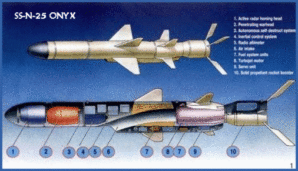
Deputy Foreign Minister of Russia, Sergei Ryabkov, in an interview with the Kommersant newspaper said: “The development of the prompt global strike system in the United States may lead to a conflict with apocalyptic consequences.”
The Prompt Global Strike (PGS) concept was adopted in the USA in the beginning of the 2000s. Prompt Global Strike (PGS) is a United States military effort to develop a system that can deliver a precision conventional weapon strike anywhere in the world within one hour, in a similar manner to a nuclear ICBM. In April 2010, Marine Corps General James Cartwright explained the system’s rationale, stating that “Today, unless you want to go nuclear, [the conventional military response time is] measured in days, maybe weeks”.
Source: U.S. looks to nonnuclear weapons to use as deterrenthttp://www.washingtonpost.com/wp-dyn/content/article/2010/04/07/AR2010040704920.html
A PGS system could also be useful during a nuclear conflict, potentially replacing nuclearweapons against 30 percent of targets.
See article: Talks at U.S. Strategic Command and University of California San Diegohttp://fas.org/blogs/security/2012/08/talks/
The PGS program encompasses numerous technologies, including conventional surface-launched rockets and air-launched hypersonic missiles, although no specific PGS system has yet been finalized.
The PGS system will be designed to complement existing American rapid-response forces, such as Forward Deployed Forces, Air Expeditionary Groups (which can deploy within 48 hours) and carrier battle groups (which can respond within 96 hours).
See article: White House Is Rethinking NuclearPolicyhttp://www.nytimes.com/2010/03/01/us/politics/01nuke.html?_r=0
Possible delivery systems include: a rocket similar to existing ICBMs, launched from land or via submarine an air-launched hypersonic cruise missile, such as the Boeing X-51 or Advanced Hypersonic Weapona kinetic weapon launched from an orbiting space platform.
In 2010, the United States Air Force prototyped a PGS system based on a modified Minuteman III ICBM.
In March 2011, Air Force Major General David Scott stated that the service had no plans to use a sea- or land-based ICBM system for Prompt Global Strike, as they would be expensive to develop and potentially “dangerous.” Instead, efforts would focus on a hypersonic glider.
However, the following day, Air Force Chief of Staff Norton Schwartz said that an ICBM-based PGS system was still an option.
The crux of the PGS idea is an opportunity to strike a non-nuclear blow on any spot on the planet no later than 60 minutes after the adequate decision. According to the plans theUnited States, it is attainable to use non-nuclear missiles to strike targets.
President Vladimir Putin considers PGS among several “new threats appearing” to Russia along with US GMD in Alaska, BMD in Europe, and increased NATO activity in eastern Europe. On 10 September 2014, Deputy Prime Minister Dmitry Rogozin once again warned “Our response to the prompt global strike strategy is upgrading our strategic nuclear forces and resources — the strategic rocket forces and the naval ones — and also developing air and space defense resources according to the plans we have finalized,”.
This evolving threat Deputy Defense Minister of Russia Yuri Borisov said that Russia may create its own prompt global strike system. The plans would be implemented on the basis of the defensive doctrine of arms development. As can be understood, this could be a response to US developments on the subject. Can Prompt Global Strike be a threat to Russia and what can Russia do to counter the US system?
In response Russia has decided to invest heavily in the modernization of the Russian defense industry. As a result, Russia approved of the arms program before 2020.
Note: Ever since the Russians developed the supersonic P270 Moskit [Mosquito] anti-ship missile, known in NATO circles as the SS-N-22 “Sunburn”, over 10 years ago the US Navy has been vulnerable to irrestible attack in confined seas such as the Persian Gulf and the Red Sea and the Eastern Mediterannean. That Sunburn missile type is said to be deployed in Syria and Iran. It was once described by Rep. Dana Rohrabacher as “the most dangerous anti-ship missile in the Russian, and now the Chinese, fleet.” The ship borne version of this missile is launched from deck mounted quad tubes, but since Rohrabacher made his comments, Russia has adapted the Sunburn for submerged launch from submarines, air launch from Sukhoi 27s, and single surface launch from modified 40’ flatbed trucks. Prior to 2003 all Western defense experts unambiguously viewed all versions of Sunburn as the “most dangerous missiles in the world”. – joe.vialls@ntlworld.com

